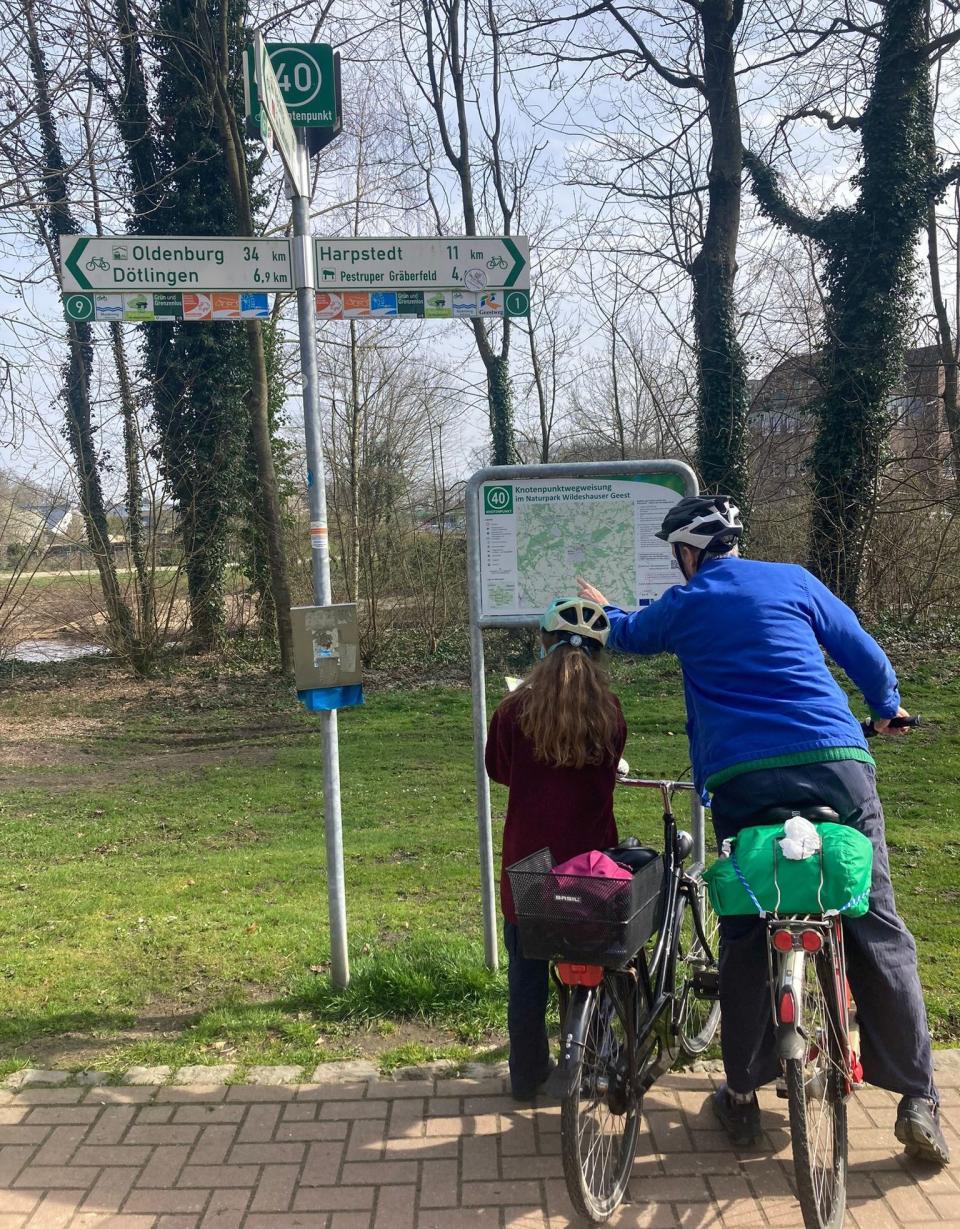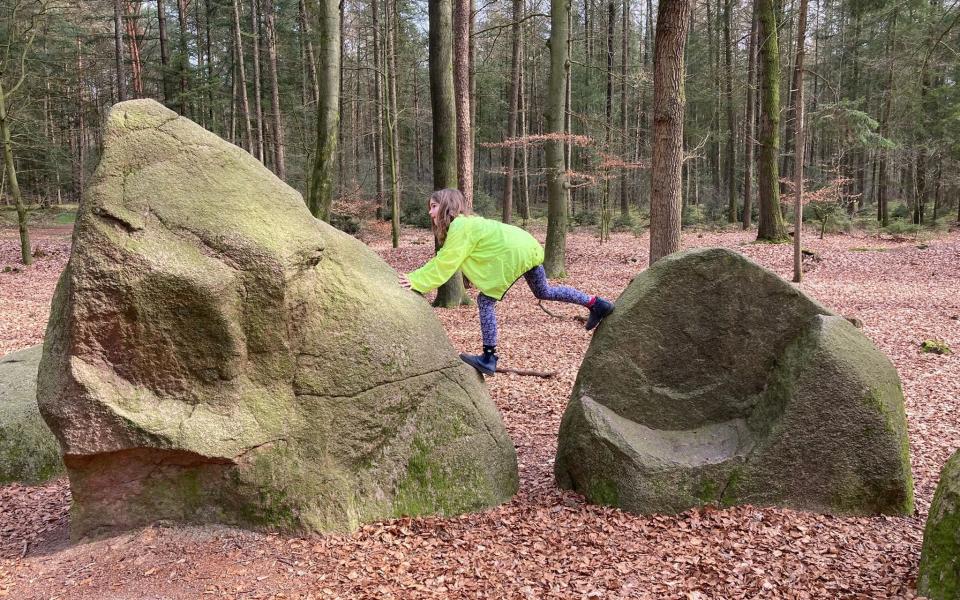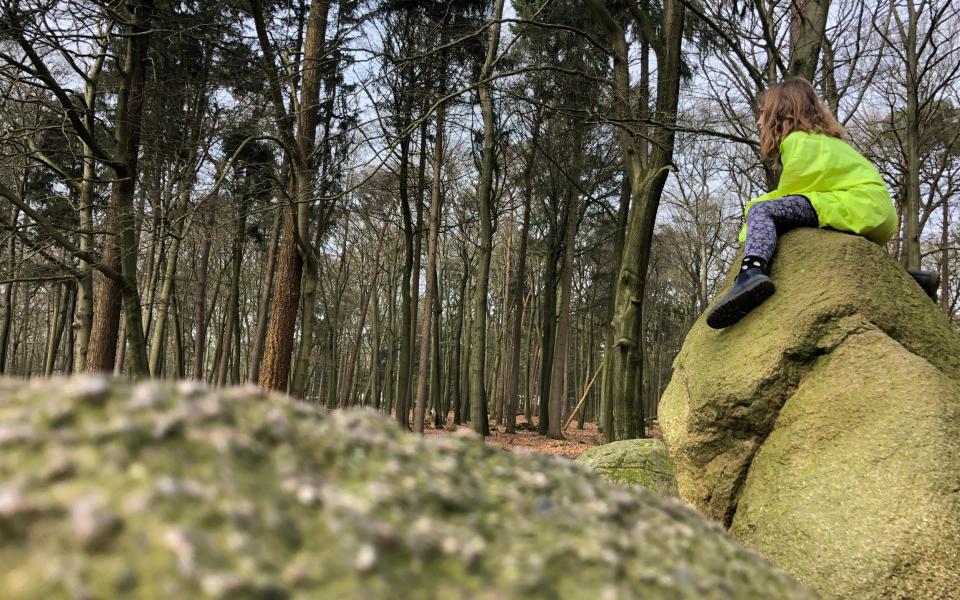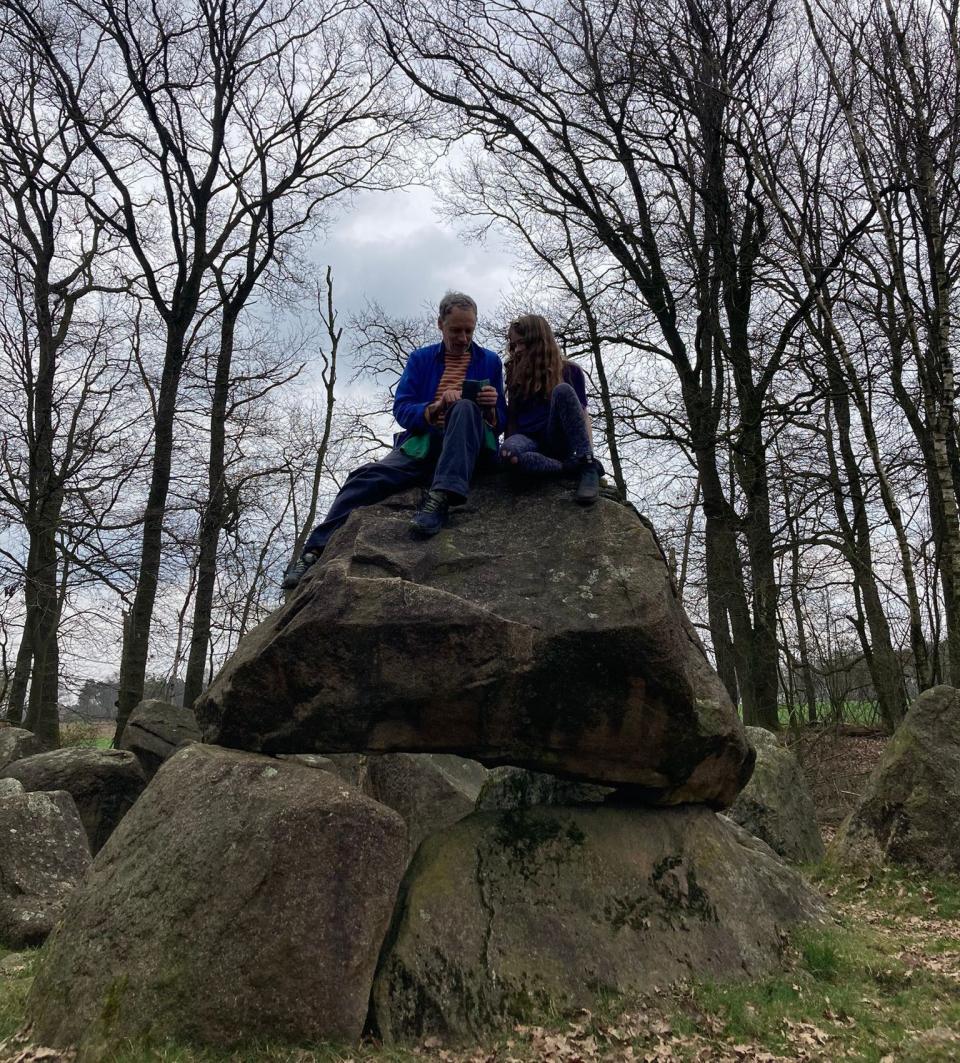‘Dirty menhirs. I curse them. I curse all stones. I curse the ice that brought them here.” After cycling twenty kilometers through the flowering lowlands of northeastern Germany, my ten-year-old daughter had had enough.
We were on the “Radroute der Megalithkultur” – a week-long cycle path among the Neolithic tombs scattered between the medieval cities of Osnabrück and Oldenburg. The Cycle Route zigzags for 380 km through dappled forests and hidden unspoilt villages, along glittering rivers, past tranquil swimming lakes and ancient heathlands. An old-fashioned, non-polluting, child-friendly family holiday; a perfect combination of cardiovascular exercises and cultural education; but it does pass a lot of stones.
Thousands of megaliths (literally: large stones) were once scattered across the countryside of northern Germany. They were brought here 330,000 to 130,000 years ago and driven here (into what is now the sky) by glaciers from Sweden. For a short period of 700 years (3500-2800 BC), the Funnel Beaker People (so called because of the funnel-shaped ceramics they made) built them into tombs, like rustic versions of the Egyptian pyramids.
No one knows why, for whom or how exactly they did it. The results, where they are still complete, look like card tables for short-legged giants: a capstone resting on side stones. They should be almost covered with sheets. Despite the use of state-of-the-art lifting equipment, modern builders have sometimes failed to return the gigantic boulders to their original positions.

Now only a hundred graves remain. Most sites were blown apart and looted by farmers or (sometimes) preachers who needed building materials for their barns and churches. The beautiful, wide farmhouses in this part of Lower Saxony often have stacks of menhir-shaped rocks at the edge of their courtyards.
One of the most startling is from the Kleinenkneter group (“Klein” means “small” in German): as long as an Olympic swimming pool. The main keystone weighs 42 tons.
“That’s over eight elephants,” my daughter whispered in awe as we cowered in the cramped burial chamber below.
Who was the bright spark who first proposed placing elephant-sized chunks of granite on top of each other? Why did everyone agree? Were they vanity projects orchestrated by the Neolithic Donald Trumps? Megaliths are appearing all over the world: piling up boulders is a common human urge. The massiveness of the stone, the impossibility of the task, the improbability of the conclusion: these strange buildings represent the furthest reach of human endurance and will; the point where the divine takes over.


“And then there’s the matter of the ice,” I shouted over my handlebars to my daughter. “What we see here is both the future and the past. Unless we stop driving gas-guzzling SUVs and making unnecessary plane trips, these kinds of rocks will also fall from the meltwater in the Arctic.”
“Please!” my daughter shouted. “No thoughtful discussion about climate change either!” and she ran screeching forward to grave 28b.
The best way to do the “Radroute der Megalithkultur” is not to do that. Don’t try to cover all 380 km, but instead take advantage of the fact that these tombs appear in clusters. Find a base and set out for day trips, alternating burial mounds with swimming in lakes or dozing in the woods and playing tag on the heath. We were in the northern cluster, so opted for the excellent Gut Moorbeck, a rural spa B&B.
It is located near Dötlingen, considered by many to be the most beautiful village in Germany. An hour after arriving at Gut Moorbeck, after a swim, a sauna and a vigorous effort in the massage chair, happiness returned. For €190 a night, four people can get a three-room apartment with a galley kitchen and a view of a mill pond, which houses a beaver called Justin.


At breakfast the next morning (€15 per person; served on a cake stand; enough to feed six) we immediately started filling the rolls as soon as the waitress left the room. The waitress smiled. She knew what we were doing. It was our breakfast: when we wanted to stuff our delicious, oily smoked trout and mackerel into rolls in strange combinations with German cheese and salami, covered with decomposing paper napkins and find them stale after three hours of cycling wanted to eat gravestones, then that was our business.
One grave we saw had not been excavated. It was on the edge of a sunlit forest. Blackthorn marked the way in explosions of white. Deer jumped between the trees. These small, less visited graves (there are several dotted along the route) provide an exciting sense of intimacy and trust.
Here, a meter beneath your feet, at the edge of the silent forest, perhaps lies another necklace of amber, ax heads, pottery shards: the remains of a people who worshiped the unknown. An ultralight rustled overhead; we stretched our heads to look: 10,000 years ago that was the height of the ice: half a kilometer high. There are huge wind turbines everywhere here; during that ice age you would have had to climb six in a row to reach the open sky.
In the museums in Oldenburg and Meppe you can see what funerary treasures archaeologists and farmers have collected. The rough construction of the pottery is exciting; the mysterious markings are something you may have done yourself. Psychologically it feels closer to a seductive Greek amphora or a smooth Roman statuette. If you could reach through the glass of the case, you could touch the hand that fashioned these crude, elegant objects from riverbank clay and a bonfire oven.


I have only two complaints about the Radroute der Megalithinkulur: first, it is impossible to get lost. We tried. We took a wrong turn, exited through the entrance paths and entered through the exits, and headed north when the guide unmistakably said, “Go south.” None of it worked. Even in the middle of a deserted forest, where no one else was seen for two hours, cheerful signs showing a green bicycle appeared from behind the trees to guide us back to the Radroute der Megalithkultur.
The exception to this is when you leave one group of stones to go to another. At this point the designers of the Rad Route fell asleep. After the grave of the Groom of Visbek, a bridge over a highway is followed by a terrifying stretch of flat road where every now and then a truck turns left to avoid you. Do not do it. Take a short way north to Ahlhorn, or south to Visbek, and take the train to Cloppenburg instead. And don’t forget to buy a regular ticket in addition to a Fahrrad ticket, otherwise you, like my partner, will spend the entire journey trying to convince the ticket inspector that you are a bicycle.
An impressively fit person can cycle 100 km per day. A family with a 10-year-old should aim for 25 km, expect riots at 30 km and be happy with 20 km. Take plenty of water with you in addition to your breakfast banditry, remember that more than four graves a day is entertainment for adults, and in no case after the 15th kilometer start educational reflections on the wonders of history: follow these three simple instructions and you will have a wonderful experience time. time
“I stopped cursing those pieces of ice cream and now I bless them,” said my daughter as we munched the last of our stale, crushed Gut Moorbeck sandwiches. Then she paused and added, “…a little.”
Essentials
Alexander was a guest at Gut Moorbeck (0049 4433255; gut-moorbeck.de/) where family B&B rooms cost €190 (£165) per night (minimum two-night stay) and single rooms €115 (£100) per night, no minimum stay.
A map and further information about the Megalithic Cultural Cycle Route can be found at all tourist offices along the route. Bicycles and e-bikes can be rented at numerous locations along the route.